Danio glofish: what are they and how to care for them?
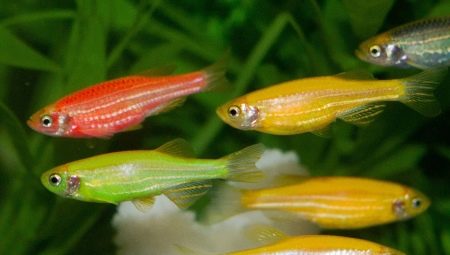
The zebrafish glofish aquarium attracts many aquarists. They are easy to maintain and look great in an aquarium. It is impossible to take your eyes off the bright fluorescent beauties. Such an aquarium will be an excellent interior decoration.

Description
Danio glofish are genetically modified fish. The genes of marine organisms were included in the structure of their DNA. Thanks to this, many bright fluorescent colors were obtained: blue, purple, red, green, orange and lime. Fish in the red spectrum got their color thanks to the DNA of the coral Discosoma, and individuals of green shades owe their color to the gene of the Equorea Victoria jellyfish. Danio glofish looks especially beautiful under fluorescent lamps.
The body structure of the glofish is the same as that of its closest relative, the zebrafish: elongated, slightly laterally flattened. Expressive stripes run along the abdomen. The fins are transparent; in young individuals they are short, but as they grow older they lengthen, forming a thin veil. By the fins, you can easily determine the approximate age of the fish. Glofish is slightly larger than ordinary zebrafish, and can grow up to 5 cm. The life span is 3-4 years. Rarely, but still there are long-livers - with good care, zebrafish glofish can live up to 5 years.

How to tell a female from a male
Sexual dimorphism in zebrafish is poorly developed, but still there are some signs, by which you can determine the sex of an individual:
- females are larger than males by about 3-5 mm;
- females are fatter, and the shape of the male's body is more taut and elongated, similar to an arrow;
- the color of the male is more saturated, the stripes are more pronounced than that of the female;
- males are more active, they can chase females even outside the spawning period.
Differences between the male and the female appear by 5–6 months, at which time the individual reaches sexual maturity. But most of all, sex differences are noticeable during the spawning period: in females, the belly is rounded, and in males, the color becomes brighter.
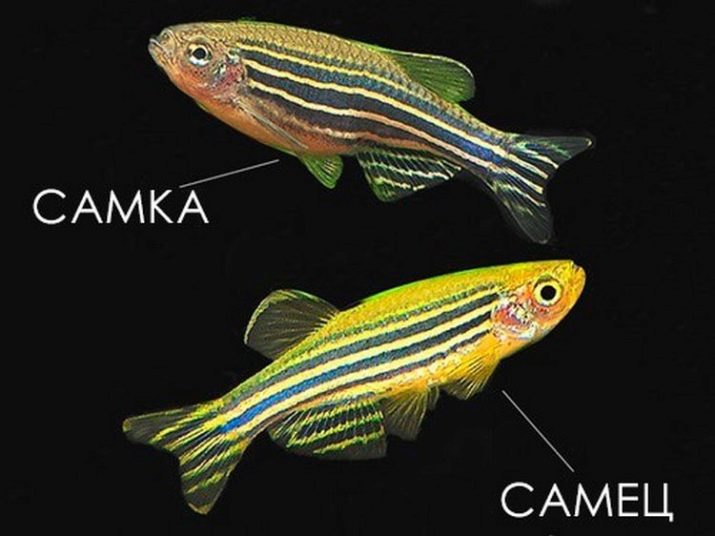
What types of fish can you keep
Danio - schooling fish, they will feel best in the company of the same fluorescent relatives, but they will get along with other peaceful species:
- neons;
- mollies;
- cardinals;
- platies;
- guppy;
- swordsmen;
- catfish;
- lalius.
Danios are very friendly, they do not even touch small shrimps and snails, but they themselves can become food for larger predatory fish.
Therefore, it is categorically impossible to lodge them with cichlids. Thorns and barbs are also unsuitable neighbors, as they nibble on the delicate fins of the zebrafish. Keeping with goldfish is also unfortunate and can be frustrating for both species. Nimble zebrafish can injure an awkward neighbor, and goldfish, in turn, can easily swallow miniature glofish.
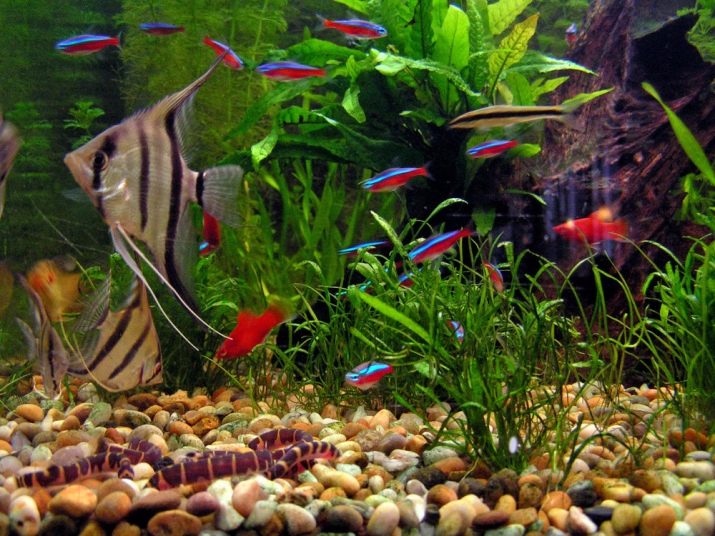
Maintenance and arrangement of the aquarium
Taking care of zebrafish glofish will not be difficult, even for novice aquarists. A school of fish will be comfortable in a 60 liter rectangular aquarium. The larger the volume of the tank, the better, because in a large container it is easier to maintain cleanliness and the required water parameters. In addition, active and playful zebrafish love space. Glofish, unlike ordinary zebrafish, are sensitive to water parameters and are more thermophilic. The following requirements are imposed on water:
- temperature - + 26-28 ° C;
- hardness - 5-15 ° dH;
- acidity - 6.5–7.5 pH.
The substrate for the aquarium, in which fluorescent fish will live, is better to choose a dark color. Against such a background, the bright color of the glofish will look advantageous. The bottom is covered with coarse sand, granite chips or small pebbles. You can place driftwood, grottoes and other decorations. Just do not clutter up the space too much, as the zebrafish need room to play.
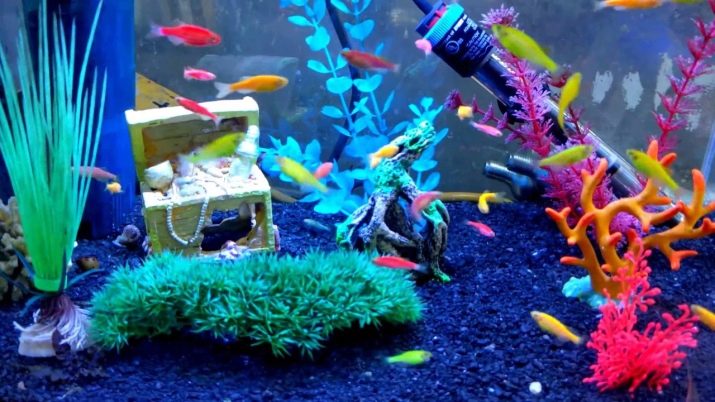
Some aquarists prefer to decorate the pond with artificial plants, they are bright and very impressive in a glofish aquarium. But it is still recommended to plant at least a couple of bushes of live algae - this will create a favorable ecosystem for the fish. The following plants are especially suitable for a pond with glofish:
- cryptocoryne;
- hygrophilia;
- sagittariya;
- echinodorus;
- anubias;
- elodea;
- javanese moss.
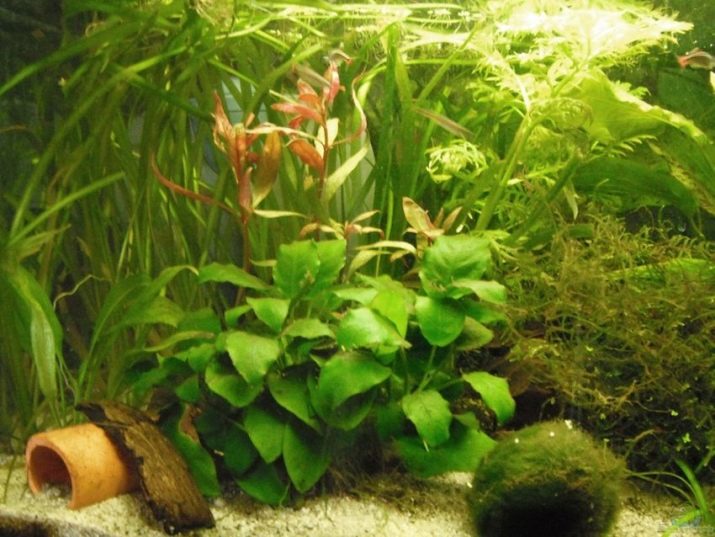
The aquarium is located away from direct sunlight and heating systems. In order for the color of zebrafish glofish to fully reveal, special attention is paid to artificial lighting. It is best to use luminaires equipped with white and UV LEDs. Lamps for marine aquariums with multi-colored LEDs are also suitable.
Aeration is desirable, especially in a densely populated aquarium. It is also important to monitor the purity of the water. Muddy water will not only negate the entire aesthetic effect of the zebrafish glofish coloring, but can also kill the fish. The aquarium is equipped with a filter and additionally a water change is made every week. To do this, 20–25% of the water is drained using a ladle or a hose and a new one is poured. Fresh water must first settle in a dark place for 3-5 days. This will allow all harmful impurities to settle to the bottom.
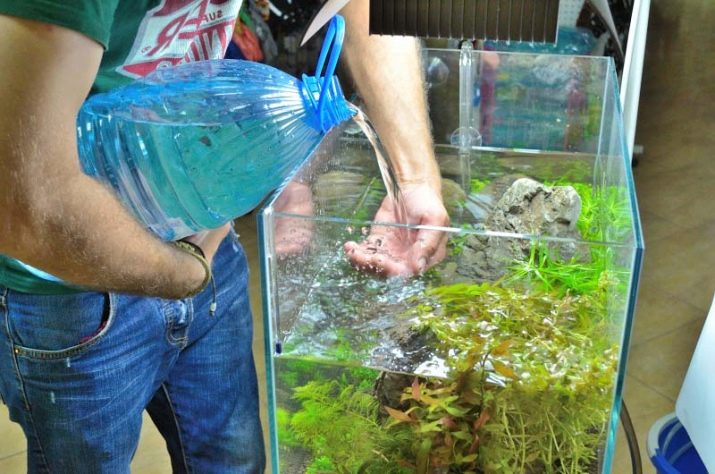
Feeding
The diet of genetically modified fish should be dominated by high-quality dry food. It is preferable to choose flakes or chips, they stay on the surface of the water longer. Tetra manufactures completely balanced feeds for different types of fish. For zebrafish glofish, it is recommended to buy Tetra Rubin Flakes. This feed contains natural color enhancers that improve coloration. You can also give your fish Tetra Menu, TetraMin and Tetra Phyll Flakes.
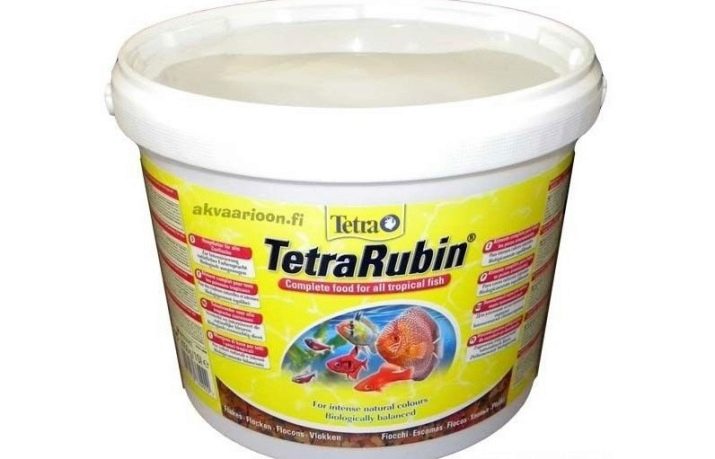
If you only give dry food, the fish can get sick.Feeding should be varied, so be sure to pamper the aquatic inhabitants with live food.
You can give bloodworms, tubule and corotra. Live food contains a large amount of protein and nutrients that support the health of fish.
They feed 2 times a day, preferably in the morning and in the evening 1–2 hours before the lights are turned off. Food is given in small portions, the portion should be eaten within 3-5 minutes. The remains of the feed must be removed, since when it decays, harmful substances are released. Some aquarists recommend arranging fasting days once a month: the fish are not fed during the day. This is an excellent prevention of obesity and other diseases of the digestive system.
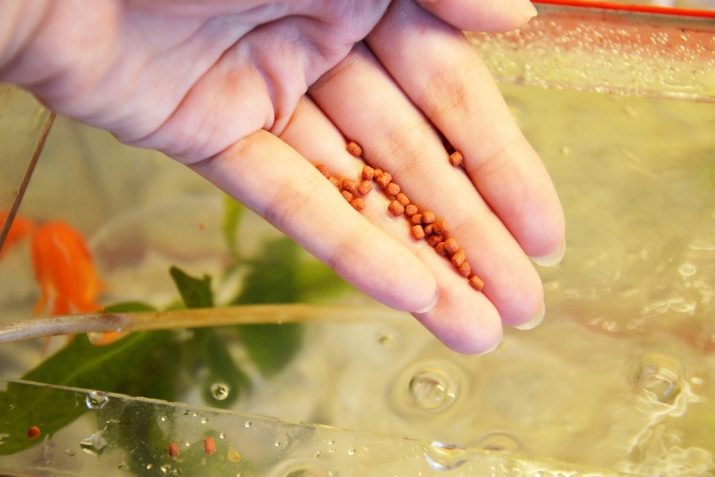
Breeding
Danio glofish can be bred at home, the color of the modified fish is completely transmitted to the offspring. For breeding, one largest female and two bright males are chosen. It is desirable that all individuals are of the same color. 1-2 weeks before spawning, the female and the males are seated in different aquariums and are fed plenty of live food. At this time, you can start preparing the spawning grounds:
- a small aquarium is suitable - 10 l;
- a separator mesh is installed just above the bottom to protect the eggs from being eaten by adults;
- the water temperature should be within + 28-30 degrees.

In a female ready for spawning, the belly is rounded, as soon as this happens, the fish can be placed in the spawning box. The female and the males are launched in the evening, and in the morning, most often, love games can already be observed. Males chase the female around the aquarium, while she lays eggs at this time. The whole process takes about 3 hours, after its completion the fish are returned to the general aquarium.
After 4 days, larvae emerge from the eggs, which feed on the yolk sac and do not yet need additional feeding. After another 3-4 days, fry are formed, they begin to swim in the reservoir in search of food. Babies are fed live dust and brine shrimp nauplii. You can also give Tetra special food for fry. Danio glofish grow quickly, and after 1–1.5 months they will be completely similar to their parents. At this time, they can be transplanted into a common aquarium.
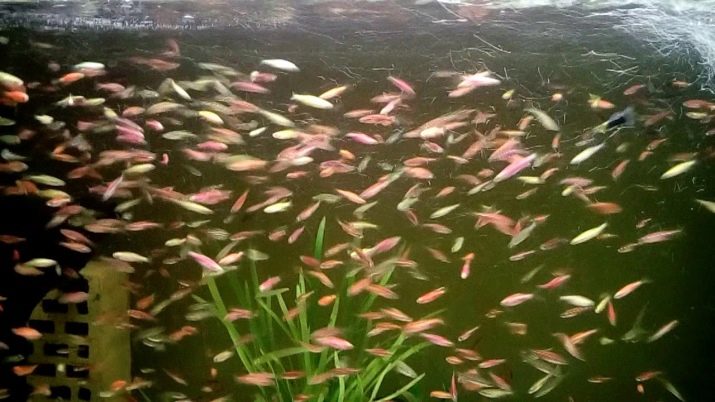
Possible problems
Danio glofish have good health, but sometimes these beautiful fish can get sick. Among the most common ailments, the following 3 diseases can be noted.
- Ophthalmic eyes. The name speaks for itself, the eyes of the fish begin to literally fall out of their orbits. The causes of the disease can be different: from non-compliance with water parameters to the presence of a fungus in the aquarium. Treatment is selected individually, using magnesium sulfate or antibiotics.
- Trikhodinoz. An infection, due to which a cloudy plaque forms on the body, the fish begins to rub its abdomen against stones and decor items. The disease is successfully treated with baths with the addition of table salt.
- Tuberculosis. A dangerous ailment, the diseased individual becomes lethargic, pale, the fins are destroyed, the stomach swells and the spine is bent. The treatment is complicated, using "Ftivazid" and "Kanamycin". It is not always possible to completely cure fish, only to stop the course of the disease.
Most often, all problems arise from poor care and poor quality feed.
Danio glofish are sensitive to water parameters, therefore it is recommended to use special tests to determine its parameters. Healthy zebrafish glofish are active, playful and, when moving, shimmer beautifully in the aquarium in different colors.
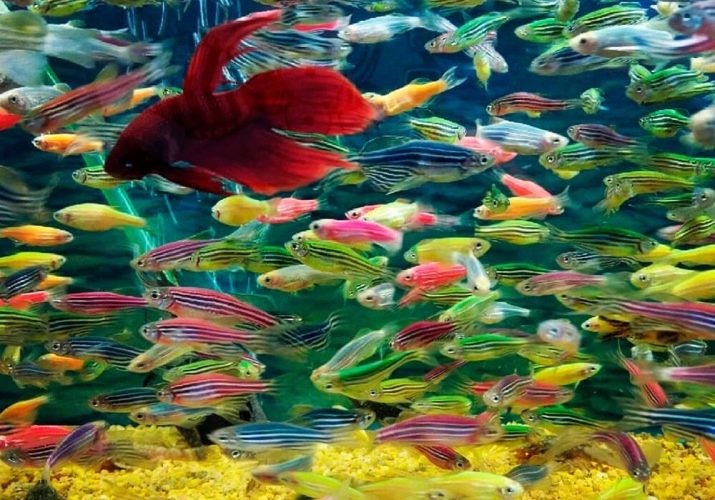
For the species, maintenance and reproduction of zebrafish, see the next video.








